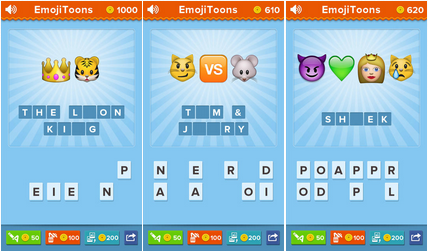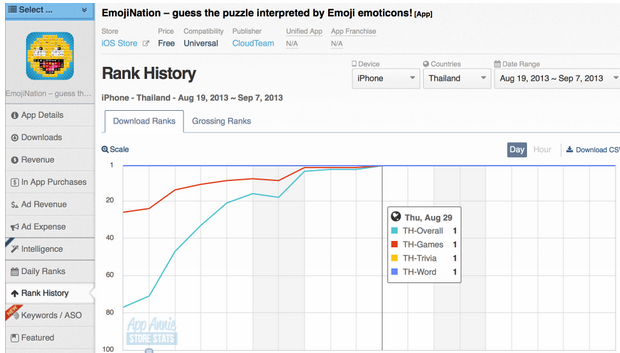A/B testing allows you to reduce the percentage of one-day users to about 25%, said AppInTop and App2Top.ru , producer of Digital Click Anton Losman.
Anton LosmanBuy smart
Buying smart is one of the components of success.
Buying smart means spending money so that it comes back to you and brings profit for some time after it has returned.
To make a profit from the application, it is necessary that the price of attracting a user is less than the amount that he will pay you for the period of “his life”.
If the LTV is less than what you spend on attracting users, then this can mean two things: either the traffic in a particular place is expensive, or the application is not optimized.
Expensive traffic is a problem, but often it’s not about it, but about an unoptimized application.
After all, you need to understand when and on what to catch a person so that he pays money.
OptimizationOver the past six months, we have increased LTV by 5 times due to application optimization.
As a rule, several focus groups are created on our server: a thousand users receive some input data, another thousand – other input data, a third group – third.
After receiving the results, we make changes to the project.
If everything possible has been done at this stage (if you have played with prices, stung somewhere, raised somewhere, given the user more freedom somewhere, restricted somewhere, carried out a set of measures with all measurements, tests), then you need to sum up.
EmojiToonsThis practice has allowed us to reduce the percentage of one-day users to about 25%.
But here it is important to understand: despite the fact that our projects are mainstream, those who do not like puzzles are cut off at the stage when they see our advertising banner.
After optimizing the application, we begin to engage in attraction tightly.
Attracting users – FacebookWith us, attracting a person to the application always takes place in 3 stages:
- Stage 1 — he sees an advertisement (a banner with text) and clicks on it to go to the App Store.
- Stage 2 — he sees a description, screenshots in front of him and decides to install the application.
- Stage 3 — he has already downloaded and installed the application, and you need to do everything possible so that he does not leave in the first minutes and does not become a one-day user.
The main source of audience for us today is Facebook. It is cheaper than others. Today, one installation through it costs us 9 rubles.
Why is it so cheap?
The fact is that Facebook has recently started working with audiences. It is now possible to create audiences based on specified criteria. We use the means of collecting statistics to select those people who came to our game, installed it, played and paid money. We collect their IDs, upload them to Facebook, and it creates an audience for us that is very similar to paying users.
The effect is to reduce the cost of the installation by 30%. The tool is called Facebook Mobile App Install Ads. Inside it, it is possible to work with audiences, upload a file, create a bow-like audience. That is, you upload a file with ID tags to Facebook, and he understands on the basis of cross-links which to choose a new database. This is a very cool tool, but it requires at least 100 IDs.
Attracting users – word of mouthIf the developer does not have money, then he can only rely on word of mouth.
It works great if the application is unique. To achieve a word of mouth effect, there must be points that spread information to a large number of people. It can be a YouTube channel, a couple of entertainment resources. Then there is a wave of traffic coming from there.
We had a similar effect when there were several entertainment programs on Thai television where people played our game.
I was trying to analyze how it happened. When we first started, we started buying traffic in Thailand. It was cheap, so we bought a lot — about 20-40 thousand installations. At the same time, we had a strong block of Thai riddles.
The op-day-users were 5-10%, that is, out of 100 people, only 10 people play for one day, and all the rest sit tight. The session length is 9 minutes. And in other countries — 2-3 minutes.
When I started watching and studying it all, I realized that with word of mouth we had a post-effect. In our case, simply because the parameters of interaction with the game were very large, users shared it with each other, posted on Facebook and so on.
Another important factor was that our project (Emojination) was made specifically for Asian markets: Asian users are very social, they all like, fumble, tell each other. Very emotional.
In total, we earned several tens of thousands of dollars. This is not much, but hundreds of times more than what we spent on the development and promotion of the game.
Attracting users – namesquattingNamesquatting is when you borrow the name and functionality of another application.
Our example: when Flappy Bird came out, we made our own analogue in two days. We have a toy called Flappy Noi. The game completely copies the game Flappy Bird, but the main character is from one of our games.
Flappy NoiUploaded to Google Play.
On the first day, absolutely without investment in advertising, we received 60 thousand installations, on the second day — the same amount.
In other words: yes, it works. Whether it is worth resorting to this depends on your goals.
The main thing in free-to-play is optimizationThe described principles of operation work not only with free-to-play.
The important thing is different: their effectiveness with the shareware distribution model is much greater. And it is within the framework of this model that application optimization is put at the forefront. No optimization – no money.
By the way, we have an average check from a paying user — $ 10, which is very cool for a simple toy. The average check is about 20-30 cents.
An audio version of the material can be downloaded as part of the AppInTop podcast here.





